项目
A project is the main place where you can manage and organize your localization process.
You can create an independent project in the Workspace root or within a specific group. Each project within the group inherits the group’s resources, managers, workflow templates, Translation Memories, Glossaries, and Machine Translation engines.
Working with Projects with or without a Workflow
When creating a project, you have two possible options for how you can organize your localization process within the project:
Anytime you can switch between these two different approaches to managing a project’s localization process by assigning or removing a workflow.
Projects without a Workflow
A project without a workflow is a streamlined localization project setup where translations are managed without predefined steps or automated processes.
When working with this kind of project configuration, you can assign dedicated translators and proofreaders to the project target languages or use Tasks to manage the localization process.
This type of project setup allows you to start the localization process right away in cases when the preferred workflow still needs to be agreed upon or if you prefer a simpler approach. While this setup provides more freedom, it also requires more manual coordination and management of translation tasks.
用例
- Get to know the main features of Crowdin Enterprise.
- Quickly start translating content without having to spend time setting up a workflow. Especially useful if you still need an agreed workflow.
- Good if there is no need for automation (e.g., automated pre-translation via TM/MT, filtering content via custom code step, ordering translations and proofreading via vendors, etc.).
- Good when the translation strategy is the same for all target languages in the project.
Projects with a Workflow
A project with a workflow is a structured localization project setup that follows a predefined sequence of steps for managing translations.
Workflows consist of multiple steps (e.g., source text review, pre-translation, translation, proofreading, etc.), which define the order and conditions that content in your project should go through and the responsibilities of project members involved in the localization process. Each step can be assigned to specific project members or vendors, ensuring a systematic and controlled progression of translation tasks.
Read more about Workflows.
Using a workflow in your project, you can automate certain actions, such as pre-translation via translation memory or machine translation engines, filtering and splitting content into two workflow threads according to specific predefined conditions, sending content for translation and proofreading to vendors, etc.
This type of project setup suits larger or more complex localization projects where consistent and standardized processes are desired.
用例
- Order professional translation and proofreading services from vendors.
- Involve your community in the translation process.
- Automate content translation via translation memory or machine translation engines.
- Use individual localization strategies for different target languages (translate some languages with the help of the community and others with vendors, translate languages with different MT engines, etc.).
项目类型
Crowdin Enterprise offers flexibility in the way you structure and manage your localization projects. 主要有两种项目类型:
- 基于文件的项目
- 基于字符串的项目
基于文件的项目
The file-based project in Crowdin Enterprise revolves around uploading source files containing translatable content. 此项目类型非常适合具有明确定义的源文件的场景,例如 Android XML、iOS 字符串、JSON 等。 它允许源文件和翻译文件之间的精确映射,使其成为许多本地化工作流的首选。
基于字符串的项目
在基于字符串的项目中,重点是将可翻译内容作为单个字符串而不是源文件进行管理。 In this project type, after uploading source files, Crowdin Enterprise parses them into source strings. 与基于文件的项目不同,源文件不会被存储,重点是在字符串级别管理内容。 当处理涉及连续内容更新、动态内容或首选面向字符串的结构的项目时,此方法非常有用。
创建项目
要创建项目,请遵循以下步骤:
- Open your organization’s Workspace, hover over the add button at the bottom right, and select Create a project.
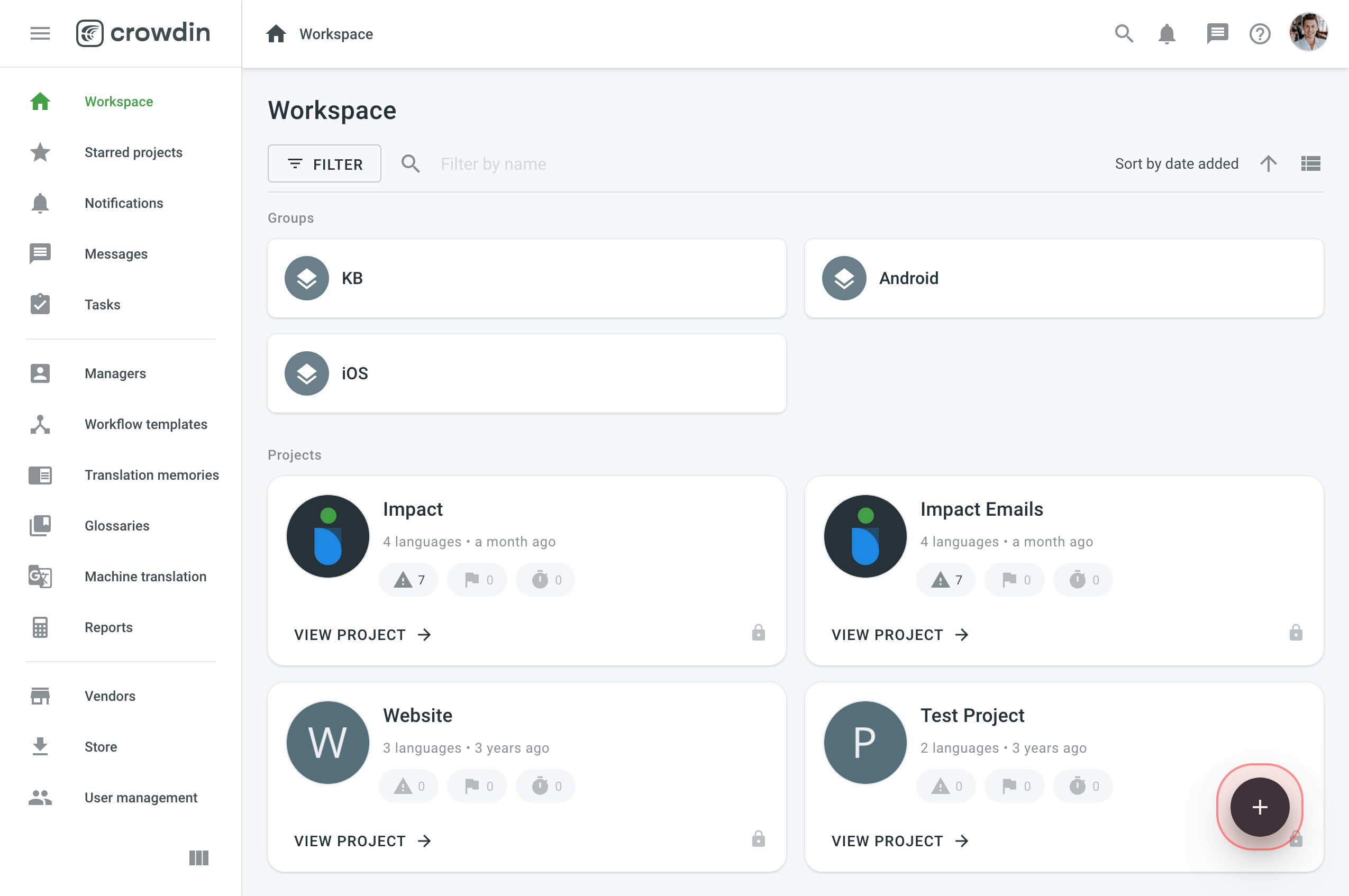
- Enter the project name.
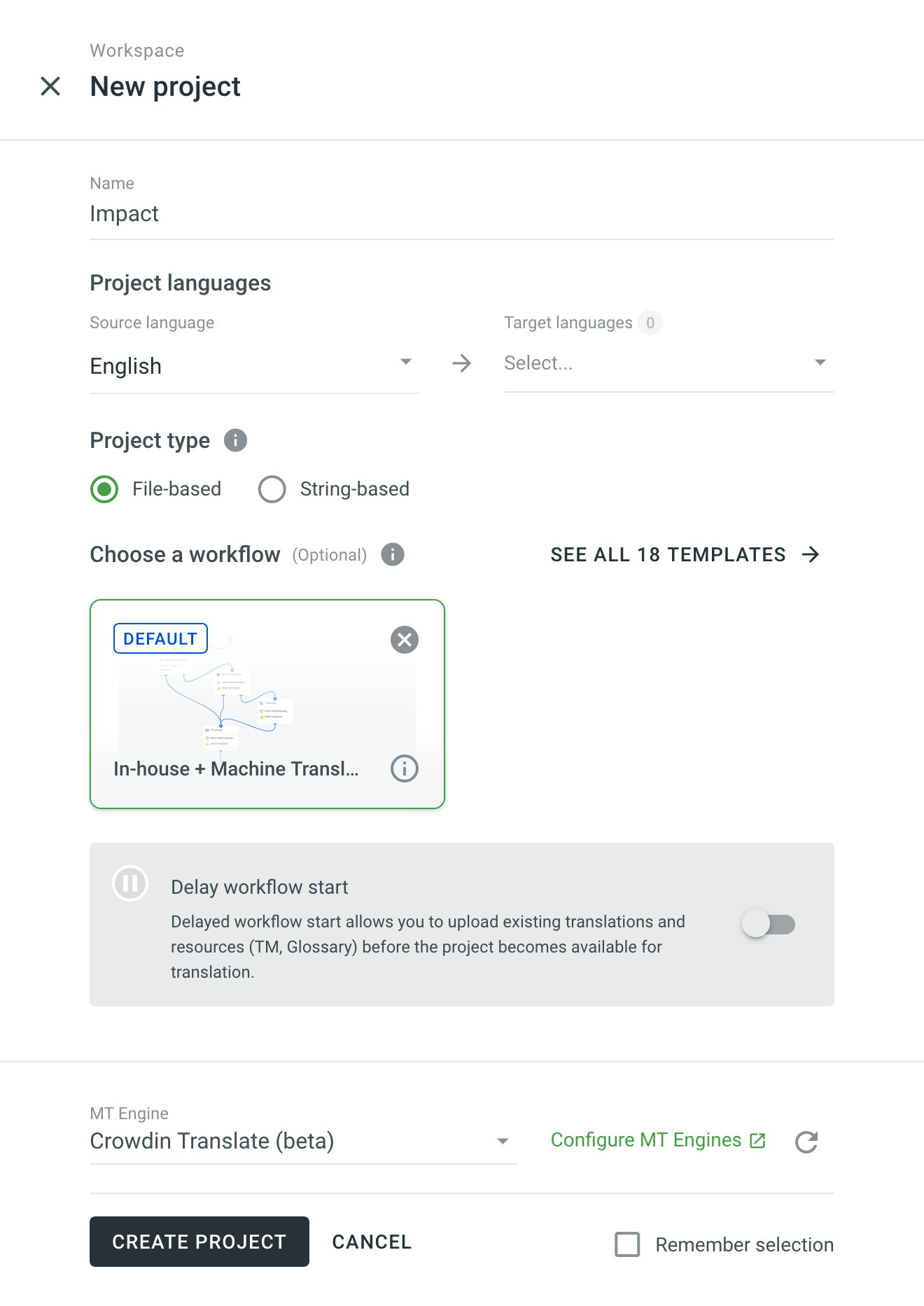
- Select the source language. You can change the source language in the project settings if necessary.
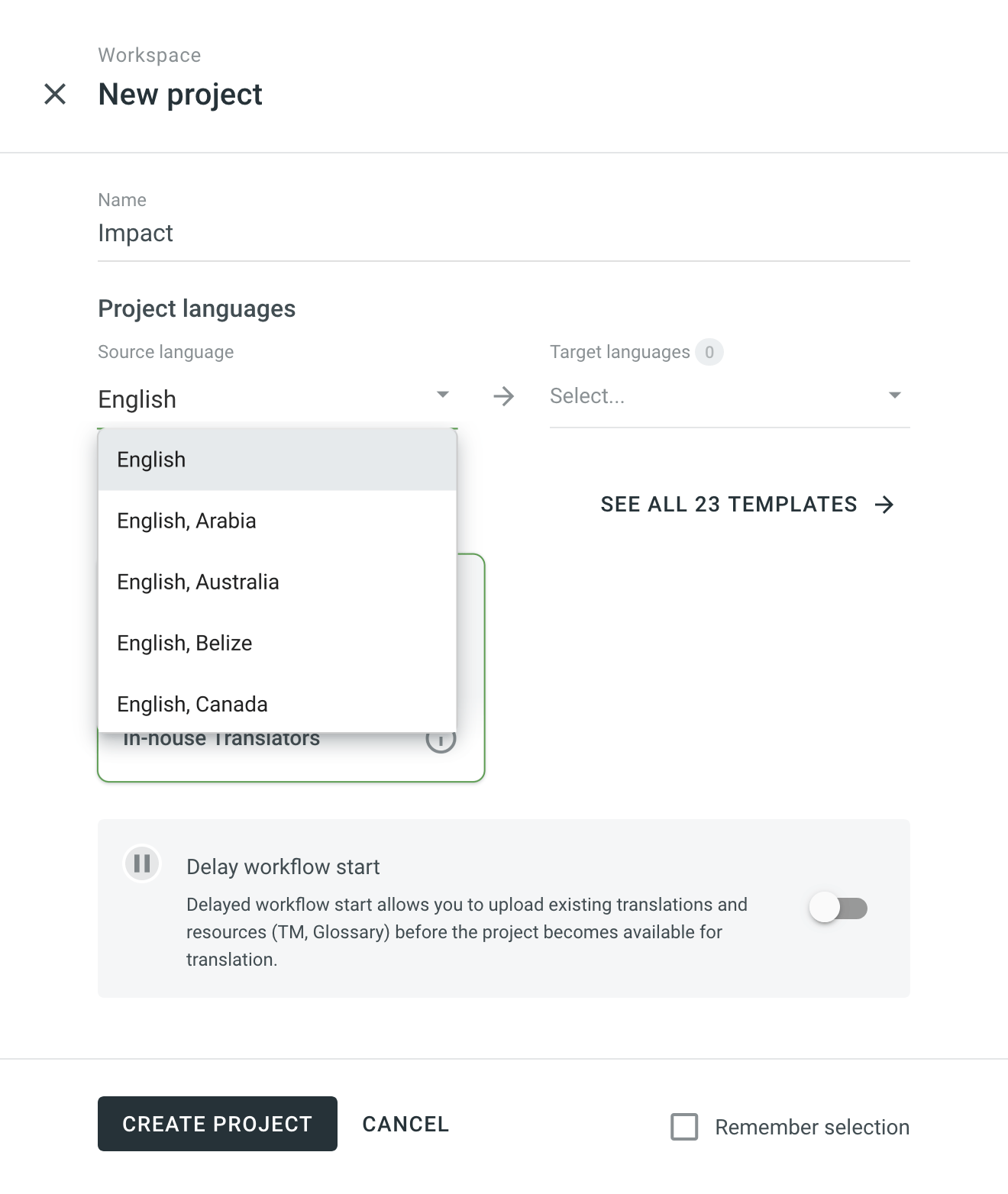
- Select target languages. You can update the project target languages in the project settings.
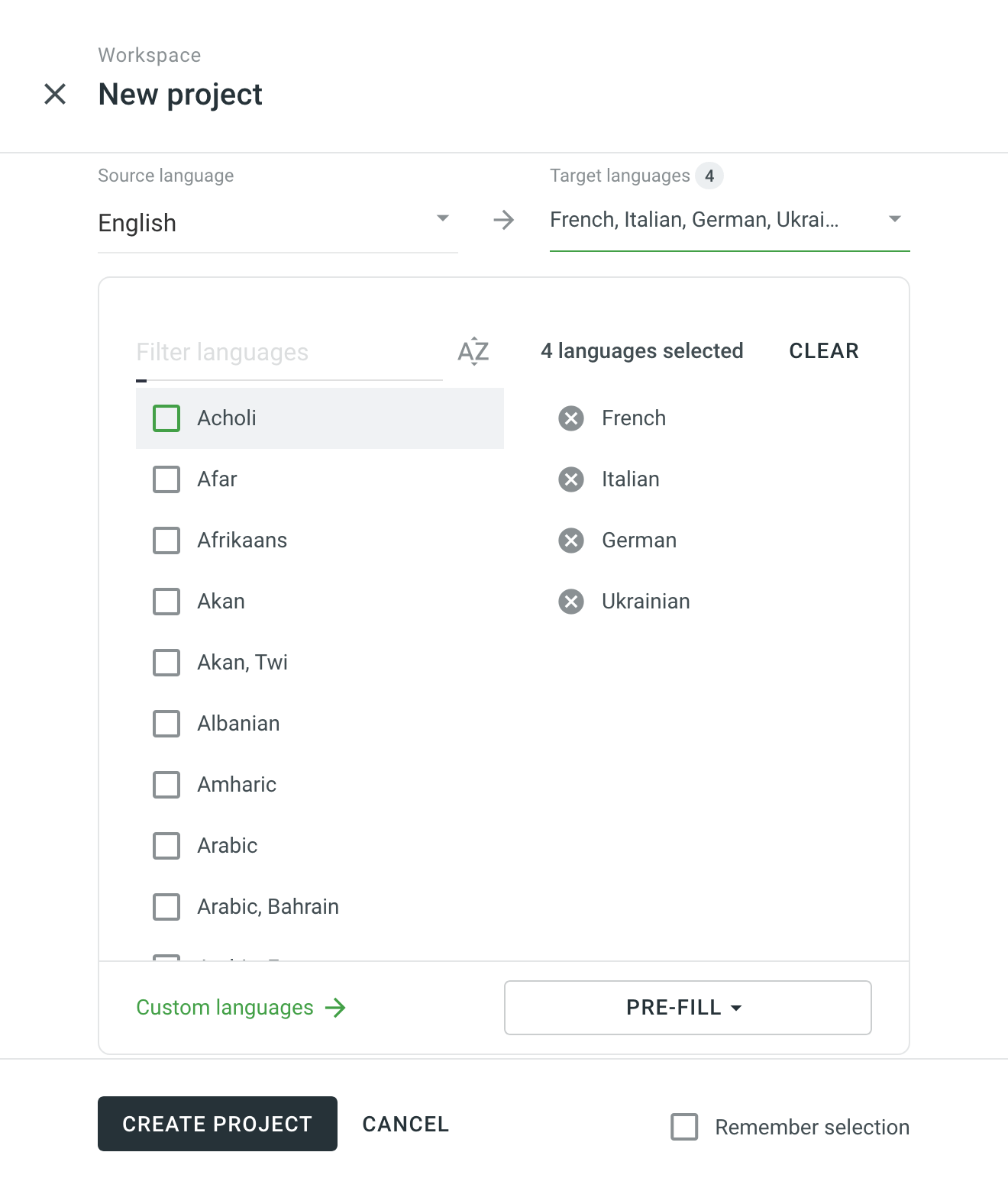
- Select String-based if you want to manage your translatable content as individual strings. Otherwise, keep File-based selected to manage your translatable content as source files. 注意:项目一旦创建就无法更改。
- (Optional) Assign a workflow or create a new one. For projects with an assigned workflow, you can enable the Delay workflow start during the project creation. This will allow you to upload existing translations and resources (TM, Glossary) before the project becomes available for translation. Once ready to start with the translation, open your project and click Start workflow in the Dashboard.
Alternatively, remove the workflow to create a project without a workflow.
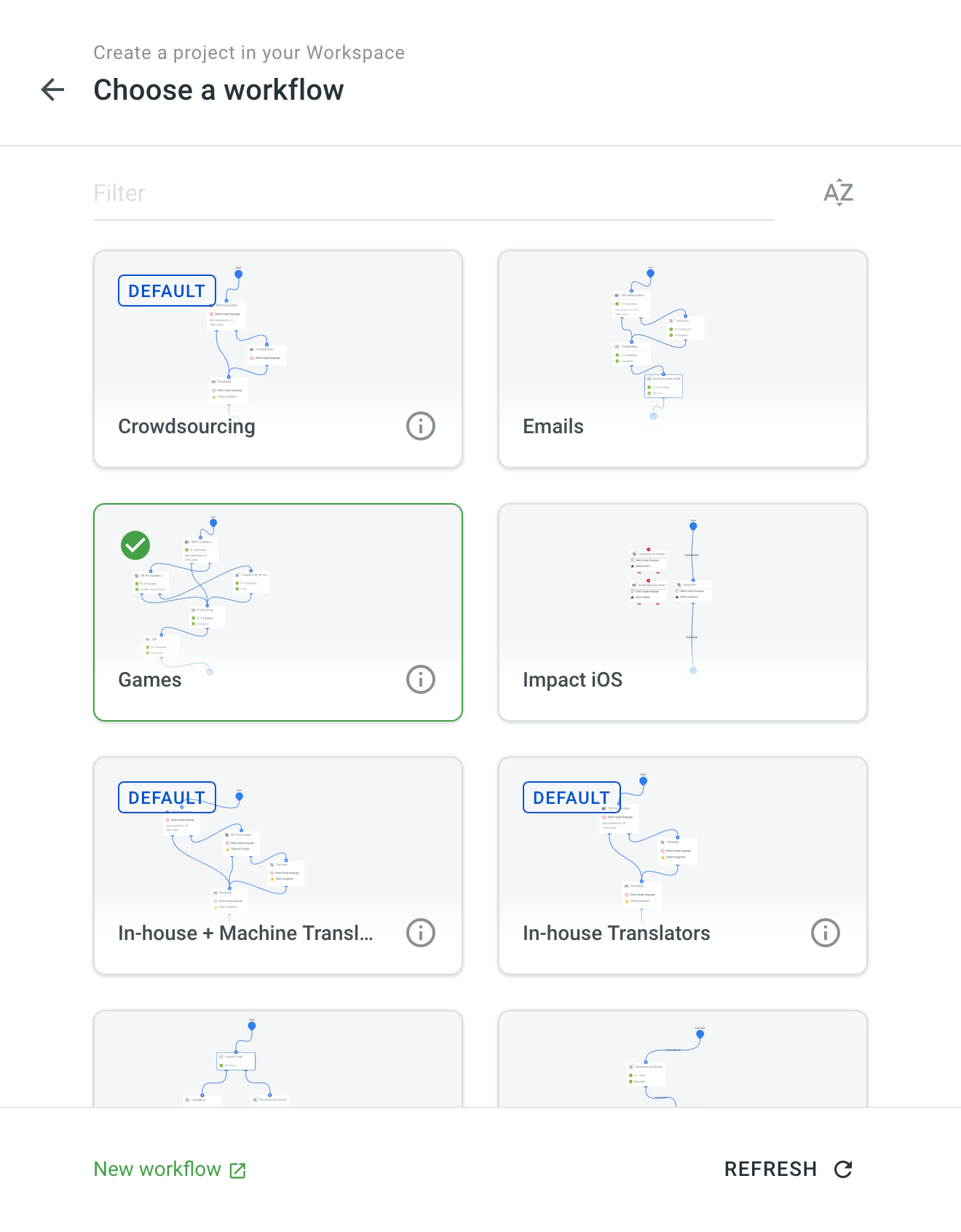
- 点击创建项目。
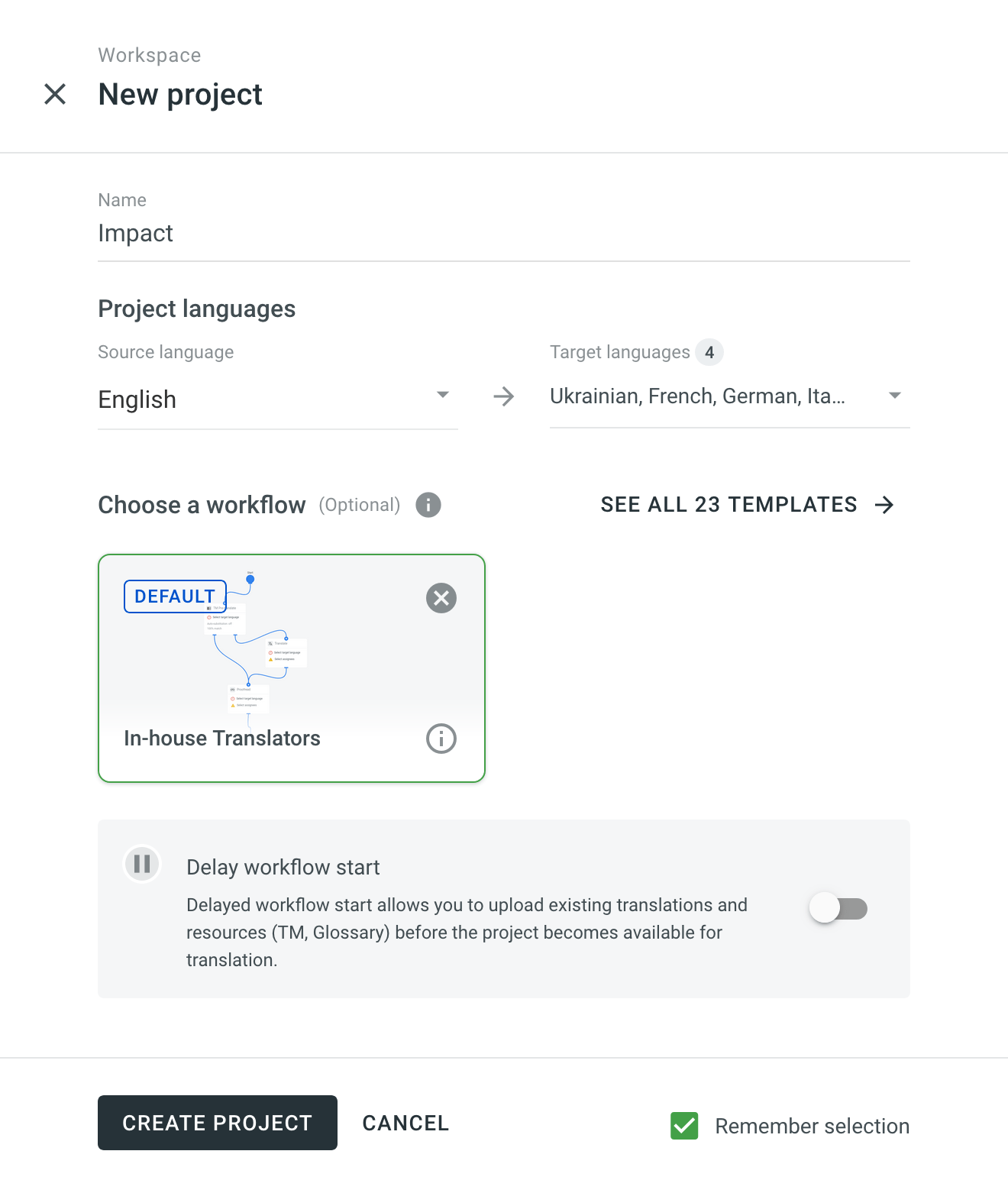 Note: If you click Remember selection at the bottom right, the selected settings will be used as a template the next time you create a project. You can edit the settings afterward.
Note: If you click Remember selection at the bottom right, the selected settings will be used as a template the next time you create a project. You can edit the settings afterward.